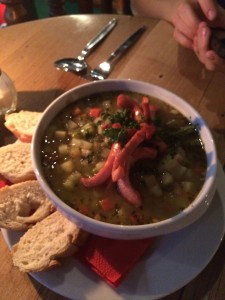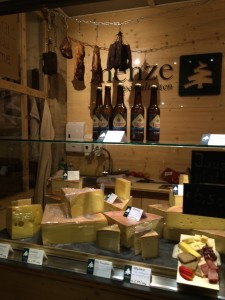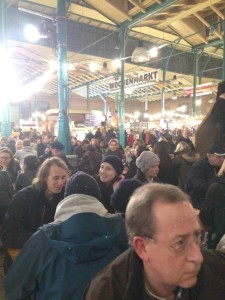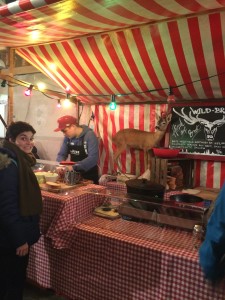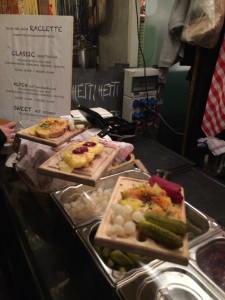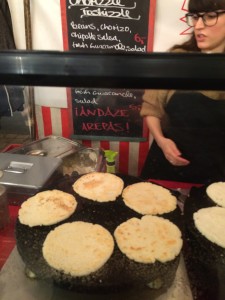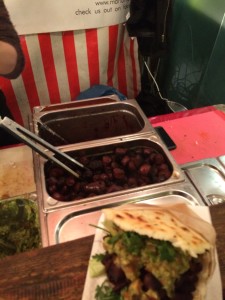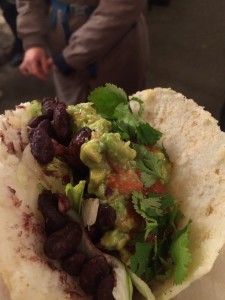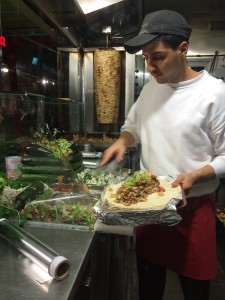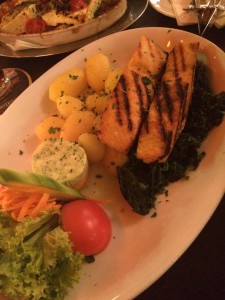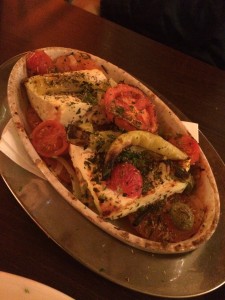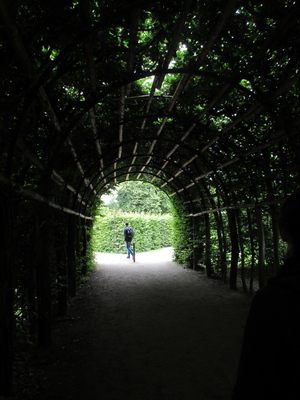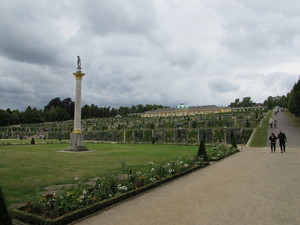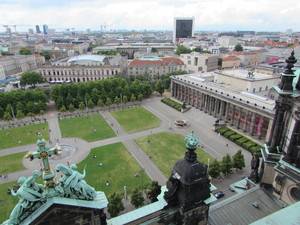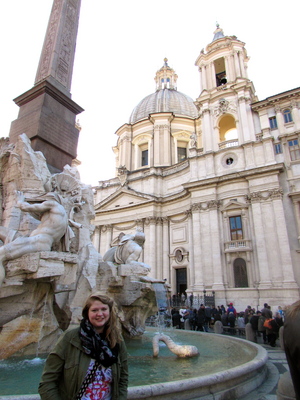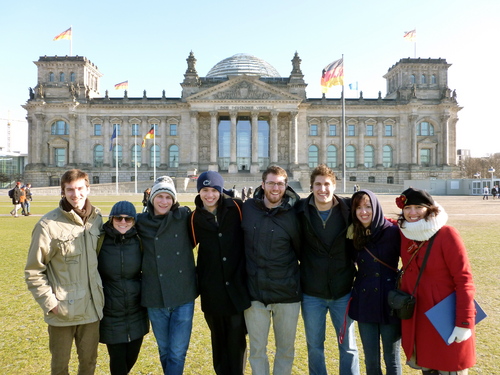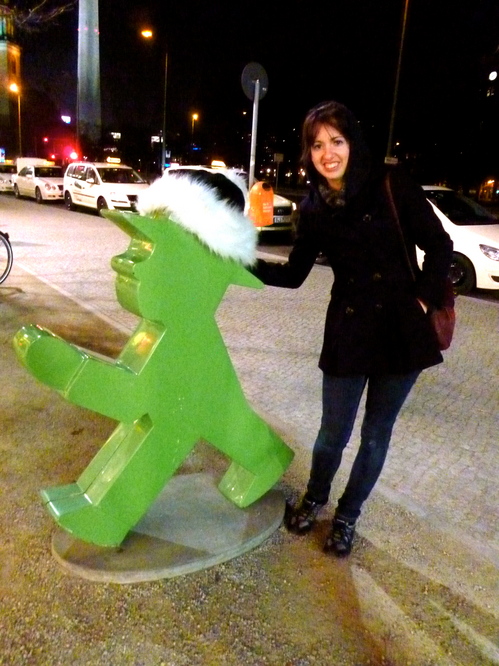Firstly , here’s the over-all video my friend Aviva and I filmed about our whole trip to Berlin – featuring the Reichstag, Berlin Wall, city exploring, and even longboarding.
But for now, FOOD! After experiencing so many delicacies, I had to just make a dedication to what I’ve been eating. YUM.
1. Authentic German Breakfast
Our friend Theresa, who is from Germany in our exchange program, kindly opened her Berlin apartment to host us. Promised a German breakfast, we took our time at the breakfast table having cappuccinos sprinkled with chocolate powder, fresh milk and organic yogurt, 2 different homemade jams, 6 types of cheese, NUTELLA, and that-morning-baked bread. YES. Although there weren’t typical meats/coldcuts which are also typical German she said, we were not complaining at all as we relished our feast.
2. “Berlin” soup
German potato and vegetable soup with sausage.
3. Kreuzberg Markthalle 9
Thursdays: Local. Fresh. And Every type of ethic food “street-food market”. It reminded me of Philadelphia’s Reading Terminal Market but full of less tourists and more locals and beer drinkers. It became one of my favorite destinations from the trip. After hunting through every food stand we made our choices.
DEER
The most tender, fall-apart-in-your-mouth deer on bread with crunchy kohlrabi slice on the side. – Aviva’s dish
RACLETTE
Process of melting a Swiss Raclette cheese onto a food of your choice. – Theresa’s
AMAZING SPANISH WRAP?
Although I have no idea what it was called – mouth wateringly it was a crispy thicker corn tortilla with Spanish chorizo sausage, guacamole, beans, chipotle salsa, and greens. ON POINT. – mine
4. Currywurst
Originating in Berlin, we went to the original currywurst “Curry 36” and I ordered the “Bio-Currywurst ohne darm”: organic sausage without sausage encasing. A little light on the curry powder but still a great experience. I was also recommended a great currywurst place in Freiburg, Mensa 3, excited to check that one too…
5. Doner’s on doner’s on doner’s…
A Turkish specialty, we see doner kebap pubs everywhere and anywhere in Germany. Equivalent to a fast-food, quick eat – I have yet to be disappointed by a doner joint. It includes meat cooked on a vertical rotisserie that is sliced off and topped with lettuce, cabbage, onions, cucumber, tomatoes, and yogurt sauce on a thick toasted flatbread.
6. Little potatoes and sheep cheese
I‘ve had these little potatoes many times before in Europe, moist flavorful and tasty. Alongside is salmon, just a favorite fish of mine. We also tried sheep cheese with vegetables and found it had a sweeter and curd-ier texture and taste to it.
You’re welcome, your mouth may now be watering. And Bonjour Paris next week!!
Location: berlin, germany



